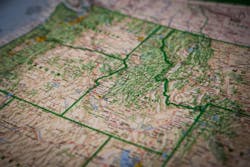SEATTLE -- The U.S. Environmental Protection Agency has awarded $2,069,912 to the Idaho Department of Environmental Quality, giving local water quality improvement projects across the state a welcome funding boost where it’s needed most.
“I love these projects,” said Chris Hladick, EPA’s Regional Administrator in Seattle. “We get to help local groups design and build locally-supported solutions to often complicated and persistent environmental challenges. Through these grants, we watch water quality magic happen.”
Jason Pappani, DEQ’s Surface Water Program Manager in Boise agrees: “The Clean Water Act Section 319 grants are the cornerstone of Idaho’s nonpoint source management program and provide resources for landowners to implement projects to improve and restore water quality for future generations of Idahoans.”
The bulk of the state’s grant will fund new on-the-ground projects similar to the successful work documented in three recently published Idaho success stories:
Efforts to Control Sediment Builds Community and Yields Environmental and Economic Benefits, North Fork Coeur d’Alene River Sub-basin, Idaho
For decades, stakeholders in the North Fork Coeur d’Alene (NFCDA) River sub-basin have worked to reduce sediment pollution and restore coldwater fisheries habitat by reducing erosion from forest roads and by restoring riparian and instream habitats. Water quality in multiple previously impaired segments has improved, thanks to dedicated individuals, available funding sources, and a programmatic approach to implementation and monitoring.
Watershed Restoration Decreases Sediment Levels and Improves Fish Habitat in Lost and Falls Creeks
In the early 1990s, U.S. Forest Service (USFS) data indicated that excessive sedimentation from eroding forest roads negatively affected cold-water aquatic life in Idaho’s Lost and Falls creeks in the North Fork Coeur d’Alene (NFCDA) River Sub basin. Watershed stakeholders, led by the USFS, have worked to decommission failing forest roads, remove eroding culverts, and restore stream habitat. Over time, these activities have reduced sediment levels and improved aquatic habitat. As a result, DEQ removed these three AUs from the state’s 2016 list of impaired waters for sediment.
Riparian and Wetland Restoration Reduces Bacteria in Deep Creek
Agricultural sources contributed to impairment of Deep Creek in the Idaho portion of the upper Palouse River Sub-basin. First identified as impaired in 1992, the Idaho Department of Environmental Quality (DEQ) included four Deep Creek assessment units (AUs) on the 1998 Clean Water Act (CWA) section 303(d) list of impaired waters due to bacteria, sediment and temperature. Watershed partners implemented agricultural best management practices (BMPs) and stream and wetland restoration projects, which reduced bacteria levels and prompted DEQ to propose to remove two Deep Creek AUs from the impaired waters list in 2016 for bacteria.
More information can be found at www.epa.gov.



